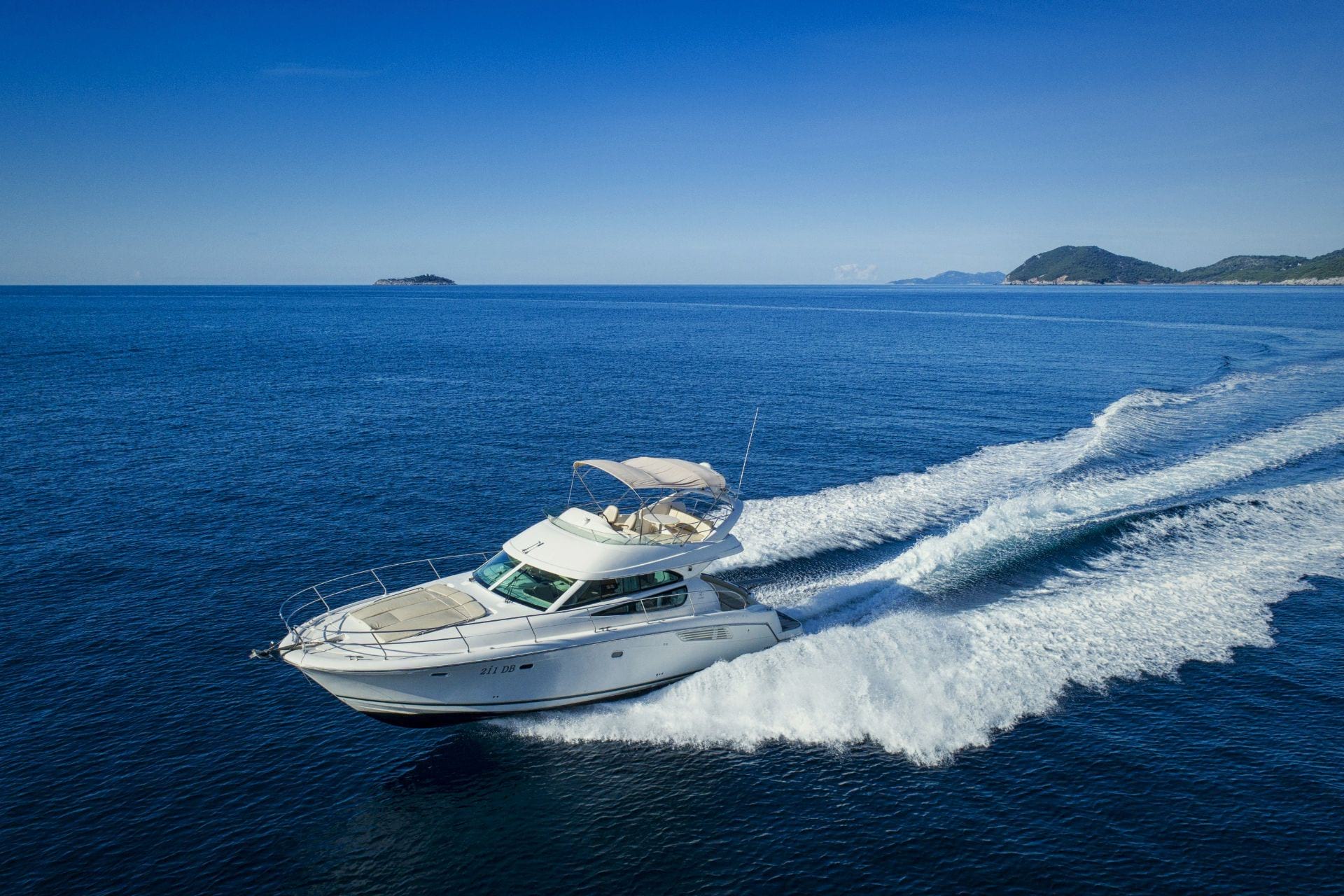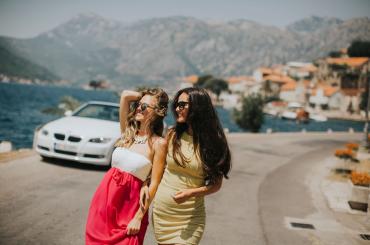
Tour Croatia+ trip
Gorgeous beaches and valleys, stone houses, vineyards and olive trees, ancient mansions and historical monuments, are just a few of the things which attract people from all over the world to visit the amazing Dalmatian islands. Cruise on a luxurious boat between some of the most beautiful ones. And not only that! UNESCO World Heritage site cities Split and Dubrovnik will be yours to explore!
Extremely versatile trip designer with an established career in travel business
Fill out a few details and get a detailed itinerary with all inclusions and trip details - we can customize them together
Discover the pure satisfaction of cruising the Dalmatian islands with a luxurious boat. Get to know Hvar celebrated for its rich history, taste some of the best Croatian wine and olive oils on the island of Korčula, find the perfect place for unwinding on Elaphite Islands and enjoy the miniature green heaven of the Mljet island. Before and after the cruise, spend few days in Split and Dubrovnik, the UNESCO protected cities.
This is how your breakfast view will look like most of the days
You are about to explore one of Europe’s spectacularly beautiful coastlines on this nine-day tour. Here are some fact you might want to check out:
Adriatic Prestige 42
Jeanneau Prestige 42 has three cabins; a master cabin, as well as two additional cabins with two single beds for your greater comfort. With two 425 HP CUMMINS engines and a cruising speed of 28 knots, you will enjoy the breathtaking view when cruising.
Deck equipment: Electric windlass, Bow thråuster, Cockpit table, Bimini, a Bathing platform with shower, Hydraulic gangway
Navigation equipment: Radar, Autopilot, Echo-sounder, Speedometer, Depth sounder, Log, 2 X GPS Plotter, VHF Radio
Extra equipment: Generator, Air conditioner, heating, SAT LCD TV, DVD player, fridge, gas cooker, oven, hot water, CD player, cockpit speakers, extra cockpit fridge, microwave oven.
Split
Split is the largest city on the Croatian coast, and yet it has preserved the relaxed lifestyle of the Mediterranean. You are expected to take it easy here since some call it “The craziest city in the world”. The city grew around the palace of the Roman Emperor Diocletian which had been built almost two millennia ago.
The historic centre of Split, built entirely from white stone, is a UNESCO World Heritage site, but the ancient landmarks are a normal backdrop of everyday life - they are not enclosed or set up as an archaeological site. So Split has many sides: a rich history, exquisite food and wine, endless fun.
Prokurative, known as the Republic Square, is a big square west of Riva (waterfront), it resembles the Venetian St. Marcus Square and it is surrounded on three sides by Neo-Renaissance buildings with arches the square was named after. It has a wonderful view overlooking the harbour and Riva.
Dalmatian cuisine mostly contains slowly cooked and easily digested food with a lot of fish, olive oil, vegetables and herbs. The little culinary secrets with the scent of bay leaves, rosemary or basil also include capers and olives, bura-dried Dalmatian prosciutto and sheep milk cheese.
Some of the most well-known Dalmatian restaurants, as well as numerous indigenous taverns, can be found in Split.
Try poljički soparnik – a meal made from chard and dough baked on coal under the bell. But the specialities of Dalmatian Hinterland are also interesting, such as sinjski arambašići – meat wrapped in small leaves of sour cabbage, fried frog legs and trout from the river Cetina.
Hvar Island
Hvar Island is not only known for its dense pine forests, crystalline waters, and mild climate; it is a multi-generational destination celebrated for its rich history, UNESCO heritage and culinary prowess. Likewise, its remote villages and ancient customs are a precious testament to the Mediterranean ancestry and lifestyle that continues to thrive today.
The Stari Grad Plain is the best-preserved system of ancient Greek field architecture in the Mediterranean. This UNESCO-protected World Heritage site, which is the largest and most fertile field on the Adriatic islands, covers 6 kilometres and has been virtually intact for over 24 centuries.
Hvar town is one of the most fascinating towns in Europe – home to the oldest public theatre in Europe, the birthplace of the ‘father of fingerprinting’ and with its very rich history. Its quaint back streets have many secrets of their own, and the architectural influence of its many invaders can be carefully observed at leisure.
Korčula Island
Korčula is one of the largest islands in southern Dalmatia and is surrounded by approximately some 50 islets. The town of Korčula, an ancient trading hub, is surrounded by walls that offer a view of the myriad islets and the steep slopes of the Pelješac peninsula on the other side of the strait. Two popular sandy beaches are located on the very south of the island, while somewhat more intimate areas by the sea can be reached by bicycle or on foot.
Two popular theories are circulating on the island of Korčula: that this is the birthplace of Marco Polo and that Odysseus stumbled upon Circe here on this very island some 2000 years ago.
Mljet National Park
The greenest island in Croatia, whose pine trees and flowers grow down till the edge of the sea and the lakes, truly fascinates with its nature. It is not even a surprise that Mljet was the first National Park in the Adriatic, as well as the reserve of natural rarities.
You will enjoy this island of mystique, untouched nature, vineyards, olive trees and rich history that goes back to the 4th century B.C. It is even said that exactly Mljet is the island that amazed the famous Odysseus, known as ‘’Ogygia’’ since the island’s nature matches many natural features that were mentioned in the famous epic of the Greek poet Homer!
Elaphite Islands
The group of islands commonly known as the Elaphites with Lopud, Koločep and Šipan was the favourite summer resort of the erstwhile residents of Dubrovnik, which is evident from the posh villas and old churches that dot the island. Šipan is the largest island in the archipelago with a single road connecting the only two villages there, while you won't find any cars at all on Koločep and Lopud.
Besides the three large islands, the Elaphites comprise a dozen mostly uninhabited islets. The name, which is of Greek origin, means “deer islands“ and it was first mentioned by several ancient geographers. It is uncertain whether deer lived on the islands or if they got the name due to their resemblance to deer when viewed from the top of Mount Srđ overlooking Dubrovnik.
Dubrovnik
Dubrovnik is known as one of the world’s finest and most perfectly preserved medieval cities in the world. The neatly contained Dubrovnik centre, a UNESCO World Heritage site, is the result of meticulous reconstruction after the earthquake of 1667. But its allure lies also in the fact that it is a lived-in city, vibrant and bustling with locals whose homes line the narrow streets and sunlit squares.
Even if you have never been to the amazing medieval city of Dubrovnik, you probably heard about the eternal and stunning beauty of the Croatian Mediterranean city you have to put on your bucket list.
Once you take a tour of the Walls of Dubrovnik, stroll through the main street Stradun and explore the alleys that lead to the walls, you will see for yourself why this sophisticated city has been used as a filming location for “Game of Thrones“ and “Star Wars: Episode VIII“.
Dubrovnik has been inscribed on UNESCO's World Heritage List ever since its inception four decades ago because the beauty of the city, with its Renaissance, Gothic and Baroque façades, leaves everyone in awe.
This historic city-state used to be a maritime powerhouse that gained clout through diplomatic prowess. Dubrovnik was the first country in Europe to abolish slavery and it also introduced sewage and fire safety systems, a retirement home, double-entry bookkeeping, maritime and insurance laws as early as the Middle Ages. Also, the city government was not allowed to make any important decisions during the period of the “jugo“, a wind that blows from the south that is usually blamed for ill moods by the inhabitants of the Adriatic Region.
Stradun is the main street in the Old Town of Dubrovnik and it connects the Gate of Pile and Gate of Ploče. Its name comes from the old Venetian word for “big street”, but not many know that locals also like to call the street Placa. Stradun is 300 metres long and there are many monuments you can see while walking along the street, such as Large and Small Onofrio Fountain, St. Saviour Church, Sponza Palace and St. Blaise’s Church (the patron saint of Dubrovnik).
Private transfer from Split airport to the hotel. Check-in and enjoy some leisure time. Split, Croatia's second-largest city, merges ancient history with modern architecture. If you have time, explore Pjaca Square, Fruit Square, and Marmont Street on foot to get a real taste of the old city. In the evening, dine at one of Split’s renowned restaurants like Zoi or Zrno soli (reservation required). Overnight in Split.
Breakfast at the hotel. Meet your guide and explore Split’s vibrant streets and historic sites, including Diocletian’s Palace and Peristyle. Enjoy a panoramic car tour to Bačvice Beach, Gripe Fortress, Poljud Stadium, and Marjan Hill. Later, visit Kaštela for a wine and food tasting at a family estate. Taste authentic Dalmatian wines and snacks while learning about local winemaking traditions. Return to Split for leisure time. Overnight in Split.
Hvar is one of the most fascinating towns in Europe – home to the oldest public theatre in Europe and with its very own UNESCO heritage
Breakfast at the hotel and check-out. Board a boat at 11 a.m. for a sail to the Pakleni Islands. Enjoy the clear waters, hidden beaches, and lagoons. Arrive at Hvar's ACI Marina Palmižana by 6 p.m. For dinner, we recommend Toto's, a waterfront restaurant. For nightlife, take a short taxi boat ride to Hvar's center. Overnight on the boat in Palmižana.
Breakfast on the boat. Transfer to Hvar town for a city tour, including Fortica Castle, Groda, and the Benedictine Nuns’ Museum. Explore the city square, historic Arsenal, Hvar Cathedral, and enjoy an espresso at Cafe Piazza. Sail to Korčula Island, stopping at Šćedro for a swim or walk. Enjoy lunch at Konoba Estravaganca in Duba Bay. Arrive at Korčula Island by 6 p.m. Explore the medieval town and dine at a Filipi restaurant. Overnight on the boat at ACI Marina Korčula.
You will visit the winery proud of the family tradition of grapevine growing and eco-friendly winemaking
Breakfast on the boat. Discover Korčula’s Old Town through a guided tour. Visit local wineries, taste fine wines and olive oils, and explore the island's landscapes. Cruise to Mljet National Park and anchor at Pomena, surrounded by pine forests. For dinner, try Konoba Barba Ive. Overnight on the boat.
Breakfast on the boat. Take a half-day tour of Mljet National Park, exploring its lakes, forests, and ancient monastery. Sail towards the Elaphite Islands, known for their summer resorts, posh villas, and old churches. Enjoy lunch on Šipan or Lopud islands and leisure time for swimming. Continue sailing to Dubrovnik and disembark at 6 p.m. Transfer to the hotel and check-in. Overnight in Dubrovnik.
Breakfast at the hotel. Enjoy a guided 2-hour walking tour of Dubrovnik’s Old Town, exploring its history and architecture. Visit Fort Lovrijenac, a Game of Thrones filming location. Spend the rest of the day at leisure. For dinner, try Arsenal, Dalmatino, or Kopun (reservation required). Overnight in Dubrovnik.
City of Dubrovnik has a rich history and is mostly known as an independent Republic of Ragusa for almost half a millennia
Breakfast at the hotel. Spend the day at leisure. Walk along Dubrovnik's 2 km long city walls for stunning views. In the evening, take the cable car up to Srđ Mountain for panoramic views. Overnight in Dubrovnik.
Breakfast at the hotel. Check-out and enjoy leisure time until your private transfer to Dubrovnik airport. If you have spare time, buy unique souvenirs like arancini (candied orange peel), sugared almonds, or Konavle-style embroidered tablecloths.
We will double-check availability and make reservations for your rooms, restaurants, guides etc.
With reservations confirmed, we will prepare the best offer possible in regard to your arrival date & party size
You will get the offer via e-mail, along with the payment options. Feel free to request further customisations!
9 DAYS
9 DAYS
6 DAYS



